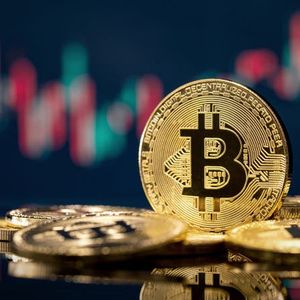Bitcoin Has Entered Its Subprime Asset Bubble Phase
7 min read
Summary Bitcoin’s recent rise is driven by speculation and subprime financing, not genuine innovation or adoption, making the rally fragile and risky. Bitcoin ETFs have enabled Wall Street to dominate the asset, undermining its original promise of financial freedom and direct ownership. The current market resembles a ‘subprime era’ for digital assets, with financial engineering and overleveraged speculation reminiscent of past financial crises. Retail investors are fueling a historic buying spree, but this could end badly as market vulnerabilities and global economic risks mount. While my December short article on Bitcoin led to a drop of around -40%, my latest in March has seen those gains eroded. However, in this article, I will explain why BTC is rising on speculation and a new subprime era of 200+ BTC treasury firms and financial engineering, rather than any new developments. I will also explain how investors buying Bitcoin may be forced to “own nothing and be happy”. The Bitcoin freedom paradox I warned investors in January 2024 on the release of the Bitcoin Exchange-Traded Funds (ETFs) that the “Wall Street Takeover” was now complete. With the funds being backed by physical coins, it meant that any ETF purchases would mean that funds like BlackRock have to take custody of the physical coins. That is the first iteration of owning nothing and being happy because investors are buying up paper assets for speculative gains and have no right to the actual blockchain version. BlackRock is now the second-largest holder of Bitcoin behind the account attributed to Satoshi Nakamoto, with 700,000 BTC. The real paradox, as I mentioned in previous articles, is that Bitcoin was meant to be a tool for financial freedom. Enthusiasts love to bash fiat currency and talk of sound money, but the sector is now almost completely controlled by a handful of Wall Street-friendly ETF providers and corporations. A well-known phrase over the last years has been the “You’ll Own Nothing and Be Happy” mantra. This was attributed to the World Economic Forum based on an essay they published, and also to Covid-era videos they released to map out a post-2030 world reliant on the sharing economy. It should not be lost on BTC investors that BlackRock CEO Larry Fink has had close ties to the economic group over the years, including being the group’s trustee . What could usher in an era of “owning nothing”, more than the largest retail stock buying spree in the history of mankind, alongside huge investment flows into thousands of digital tokens with no real-world value? Instead of buying tangible assets, investors are piling into tech stocks and the digital ecosystem, which are both overvalued in my opinion. Bitcoin enters its subprime era Not only has Bitcoin been taken over by Wall Street, but its arrival has now ushered in the digital asset’s subprime era. The housing crisis in 2007 showed the likely end goal of tangible assets that are owned and leveraged by hedge funds and investment banks. As large ETF providers and investment managers enter the industry, sophisticated financial engineering in Bitcoin has begun. Short-selling hedge fund guru Jim Chanos has been vocally critical of Strategy ( MSTR ) stock’s founder, Michael Saylor, for his current balance sheet maneuvers. Talking on a Bloomberg podcast , Chanos talked of the risk in the company’s valuation and the fact that investors are happy to pay for shares that cost almost double the Net Asset Value of the company’s BTC holdings. It was stated in the podcast that there are now over 200 “copycat” companies replicating this strategy. But cheap debt is only possible as BTC is rising, and in the next downturn, stocks will have to be diluted, and quarterly earnings driven by coin appreciation will disappear. Saylor referred to his new approach as “intelligent leverage”, where the company has issued more than $6bn in convertible bonds solely to purchase BTC. On the other side of that trade are arbitrageurs, who may short the stock or apply options strategies to lock in some extra premium. All of this is hugely disconnected from the original use case of BTC. Chanos decided to short Strategy, but to hedge it with the physical Bitcoin, which is the opposite of what investors are doing now. He also previously referred to the coin as a “libertarian fantasy.” He stated that if the fiat currency system crashed, he wouldn’t want Bitcoin. “Food would work the best,” he said. The curious case of founders and whales The other huge red flag in Bitcoin is the story of its supposed founder, Satoshi Nakamoto. Nakamoto is said to be the largest holder of BTC with 1.2 million coins and disappeared in 2011. Nakamoto emailed a colleague to say he had “moved on to other things” and was never heard of again. His current stash of coins remains untouched and would be worth up to $100 billion in today’s prices. Investors can believe that story if they want, but in my view, it is a fantasy. Interestingly enough, we saw movement in some other 2011 Bitcoin holdings that had been untouched. It takes a very patient investor with no material desires to sit on a 14 million percent price hike, but that’s the next tale. Data from the blockchain showed that three addresses originating from the same owner shifted 23,377 BTC last week. This is the first activity in the coin since April 2011, when BTC traded at $0.78. Analysts are saying that the move is based on security upgrades, but the timing seems strange, in my opinion. More on that speculation In my December short article, I noted the current setup of the “Buffett Indicator”, which appears to be arriving right on time for a 2,000-style market top. I also noted it in a February short article on tech stocks, ahead of the market’s collapse. That dump into April should have been a warning to investors of the market’s fragility, but we are now seeing another push higher, with retail investors buying the dip. In the first half of 2025, retail investors traded a record $6.6 trillion in stocks. The cumulative flow of retail money into ETFs and single stocks was estimated at $137.6 billion to $155.3 billion. Meanwhile, in a recent investor survey , 70% of participants believe that markets will be higher in twelve months and are cutting back on other spending habits to invest in the markets. I believe we are watching one of the largest wealth transfers in world history, which could end very badly for small investors. Possible steps to owning nothing As we saw from February to April, the market rally is technically vulnerable to bad news. That was a mild tariff dispute that has since been remedied with very little damage to the global economy, but many storm clouds are looming in government spending and debt. The U.S. debt is ballooning, but President Trump’s huge spending bill is set to delay any near-term issues. However, we have seen cracks in the Japanese bond market, while countries such as the United Kingdom are undergoing fiscal chaos . Like the subprime crisis in 2007, or the tech market rally that was halted by the Russia/Ukraine conflict, I believe that we are only a few bad headlines away from another severe downturn. As we saw in 2021-22, Bitcoin is following the Nasdaq almost perfectly and will follow tech stocks down again in a downturn. In my opinion, investors paying for leveraged coins at these levels could see their investments crushed in Bitcoin treasury companies, and ETF flows could grind to a halt, with the majority of late investors underwater. At that point, nothing is off the table, and in the right crisis, the release of a government-approved USD stablecoin could arrive, allowing you to transfer your beaten-down crypto into a safe USD asset at a fraction of its previous worth. At that point, “You Will Own Nothing and You Will Be Happy.” This may not be far away, as President Trump’s GENIUS Act has set the stage for stablecoin regulation in the United States, where banks can issue a digital dollar. Federal Reserve policymakers are also touting stablecoins as being “good for competition”. The market is moving into an all-time high ahead of the so-called “crypto week” in Congress, and history may mark that as an important turning point. Risks to the short thesis The obvious risk at the moment is that I believe we are at the tail end of a speculative move that continues higher while stocks remain elevated. We also have the fact that there is limited selling appetite and a retail thirst for ETF investments, alongside the growing investment flows from the BTC treasury companies. I would be a short-term speculator of BTC, but I believe long-term holders will be punished. Conclusion Investors should know how the game ends when an anonymous account and a handful of large Wall Street investment firms now control Bitcoin. Worse still, we are now entering the subprime phase, where Bitcoin treasury companies are leveraging their balance sheet to purchase the digital currency in the belief that it can only go higher. That was the prevailing belief on the housing market in 2007. Adding to the subprime-era connection, we are seeing record levels of retail investor interest, and everyday consumerism is being shunned to buy into this rally at record highs. Unfortunately, many investors in this game may be left owning nothing, whether they have physical or paper assets.

Source: Seeking Alpha



